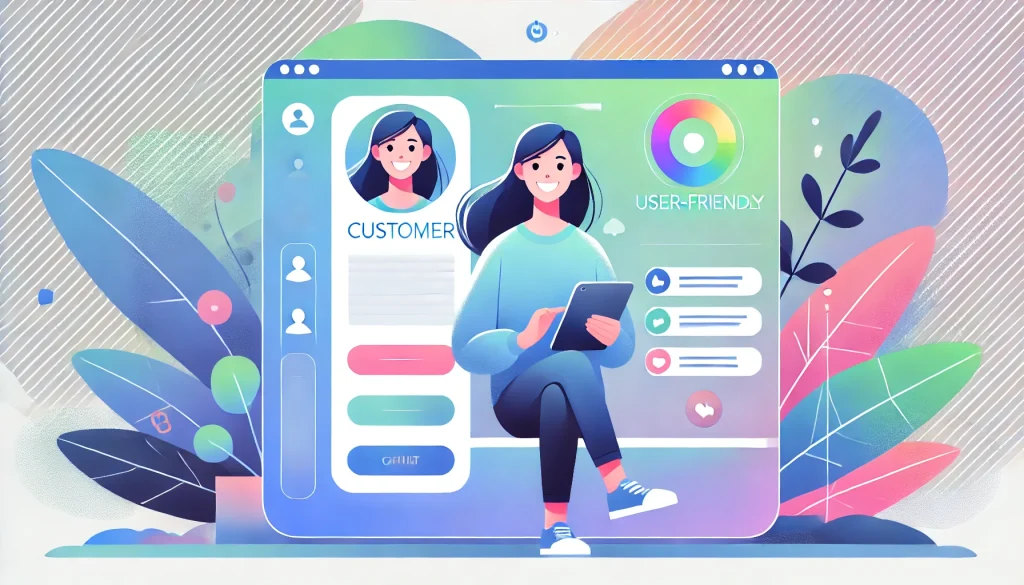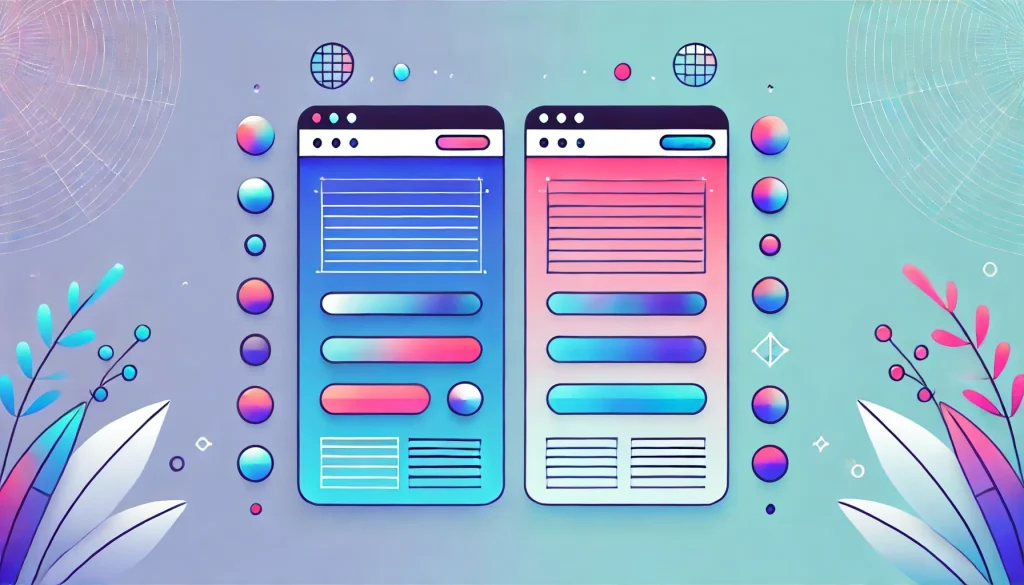
Customer engagement is the foundation of successful marketing strategies. As businesses strive to connect with their audiences, User Experience (UX) has emerged as a critical factor in driving customer engagement. This blog explores the pivotal role of UX in marketing technology and how it can transform customer interactions into lasting relationships.
The Strategic Importance of UX

User Experience (UX) is a fundamental aspect of modern marketing. UX encompasses every interaction a customer has with a brand, from navigating a website to using a mobile app. A well-designed UX ensures that these interactions are smooth, intuitive, and enjoyable, leading to higher customer satisfaction and loyalty.
1. The Shift Towards Customer-Centric Design
As consumer expectations evolve, brands are increasingly shifting towards a customer-centric design approach. This entails placing the customer at the heart of the design process, ensuring that their needs, preferences, and pain points are addressed effectively. By understanding the customer journey and integrating feedback, businesses can create more relevant and personalised experiences that drive engagement.
2. The UX Lifecycle: From Research to Feedback
The UX lifecycle is a continuous process that involves research, design, testing, and iteration. Understanding user behaviour through qualitative and quantitative research methods provides invaluable insights that inform design decisions. Regular feedback loops help businesses stay aligned with customer expectations, ensuring that the user experience evolves alongside market trends and user preferences.
Enhancing Customer Satisfaction

One of the most direct benefits of effective UX is improved customer satisfaction. According to a study by Forrester, a well-designed user interface could increase a website’s conversion rate by up to 200%. However, an enhanced UX design can take this a step further, potentially increasing conversion rates by up to a staggering 400%. When customers find it easy to navigate a website or use a product, their overall satisfaction increases, making them more likely to return and recommend the brand to others.
1. Personalisation and Customer Engagement
Personalisation is a key aspect of enhancing customer satisfaction. By utilising data analytics and machine learning, businesses can tailor content, recommendations, and experiences to individual users. This level of personalisation fosters a deeper connection with customers, making them feel valued and understood, which in turn drives engagement.
2. The Role of AI in Personalisation

Artificial Intelligence (AI) plays a significant role in enhancing personalisation efforts. AI algorithms analyse user behaviour and preferences to provide tailored experiences. From personalised email campaigns to product recommendations, AI can dynamically adapt content to meet individual user needs, increasing the likelihood of engagement.
3. Multichannel Experience

In an era where consumers interact with brands through various channels, providing a multichannel experience is essential. Whether it’s through a website, social media, or a mobile app, consistency in design and messaging enhances user trust. Brands that effectively integrate their marketing efforts across channels create a cohesive customer journey, improving overall satisfaction and engagement.
Boosting Conversion Rates

A focus on UX is crucial in converting visitors into customers. Simplifying complex processes, enhancing content readability, and making calls-to-action clear and compelling are all strategies that UX professionals use to guide users seamlessly through the sales funnel. Research found that design-led companies have outperformed the S&P Index by 219% over ten years. This highlights the significant impact of UX on a company’s bottom line.
1. The Role of A/B Testing

A/B testing is an essential method in UX design for optimising conversion rates. Comparing two versions of a web page or app feature helps businesses determine which one performs better in terms of user engagement and conversion. This data-driven approach allows marketers to make informed decisions and continually refine their offerings for better performance.
2. The Importance of Clear Navigation
A well-structured navigation system is vital for user engagement. When users can easily find the information or products they are looking for, they are more likely to convert. UX designers focus on creating clear and intuitive navigation paths, minimizing the cognitive load on users and facilitating smoother transitions through the sales funnel.
Reducing Development Costs

Investing in UX early in the product development process can lead to substantial cost savings. Identifying potential usability issues through user testing and research helps avoid costly redesigns and modifications after a product’s launch. According to recent reports, every dollar invested in UX brings a return of $100. This proactive approach not only saves money but also accelerates time-to-market.
The Importance of Usability Testing

Usability testing is a vital component of the UX design process. By observing real users as they interact with a product, businesses can gather invaluable insights into how to improve functionality and design. This iterative process helps create a user-friendly product that resonates with customers, ultimately leading to lower support costs and higher user satisfaction.
Strengthening Brand Loyalty

A seamless and enjoyable user experience fosters brand loyalty. When customers have positive interactions with a brand, they are more likely to develop an emotional connection and remain loyal. A study by PwC found that 73% of consumers point to customer experience as an important factor in their purchasing decisions. This underscores the importance of UX in building long-term customer relationships.
1. Building Trust Through Consistency
Consistency across all platforms and touch points is crucial for building brand loyalty. A unified experience reinforces trust and reliability, making customers more likely to engage with a brand repeatedly. Whether it’s through a website, app, or social media, maintaining consistent branding and messaging helps solidify customer relationships.
2. The Emotional Connection
Emotion plays a significant role in customer loyalty. Positive experiences can evoke feelings of joy, satisfaction, and trust, while negative experiences can lead to frustration and disappointment. Brands that prioritise UX can create emotional connections through engaging storytelling, appealing design, and responsive customer service, fostering long-term loyalty.
Measuring UX Success

To understand the effectiveness of UX efforts, businesses must measure success through various metrics. These include user satisfaction scores, Net Promoter Scores (NPS), and conversion rates. By analyzing these metrics, businesses can identify areas for improvement and ensure that their UX strategies are aligned with their goals.
Customer Feedback Loops
Implementing customer feedback loops is essential for continuous improvement. Surveys, interviews, and usability tests can provide insights into user experiences, allowing brands to adapt and refine their UX strategies over time. Actively seeking feedback demonstrates a commitment to meeting customer needs, enhancing loyalty and engagement.
Looking Ahead: The Future of UX in Marketing Technology

The future of UX in marketing technology holds immense potential. As technologies like augmented reality (AR) and virtual reality (VR) gain traction, the ways in which customers interact with brands will continue to evolve. Businesses that embrace these advancements and integrate them into their UX strategies will likely lead the charge in delivering innovative and engaging experiences.
Conclusion

In the current space of digital marketing, UX is a powerful tool for driving customer engagement. By focusing on creating meaningful and enjoyable experiences, businesses can enhance customer satisfaction, boost conversion rates, reduce development costs, and strengthen brand loyalty. Investing in UX is not just a trend; it’s a strategic imperative for any business looking to thrive in the digital age. As marketing technology continues to evolve, prioritising user experience will remain essential in fostering deep, lasting connections with customers.
Also Read: Elevate Your Marketing Game With Visual Storytelling







